I. Introduction
In today’s socioeconomic climate, it is difficult for wine producers to remain relevant in the global market. For years, industrial vineyards dominated, because they were able to produce wines efficiently, for very little money. However, this is not enough for today’s consumers; they are tired of the old status quo. Producers from Panzano, Italy, believe they have found the solution to this demand, biological wines. According to these producers, biological wines are superior because they lack chemical or mechanical influence, improving the taste of the wine, and protecting the health of the consumer, and the environment. As biological wine development progresses, it will overtake the popularity industrial vineyards maintain.
Historically, there were two classes of wines produced to satisfy consumers. The first class, known as the “fine wines,” was typically produced on European estates and was associated with “glamor” and “prestige.” Although these wine were made in small quantities, they were expensive and rich in flavor. The larger class, known as “commodity wines,” was made for a much larger group of consumers who were unable to afford “fine wines”. These wines were made industrially and were sold for slightly more than production costs, but had a poor taste. Currently, consumers of “commodity wines” are no longer content with drinking poor tasting wine; they want a wine that is rich in flavor while still economical (Goode and Harrop, 2008).
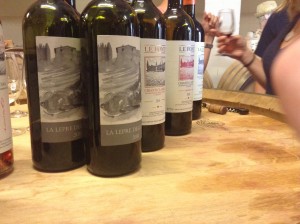
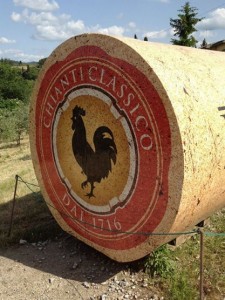
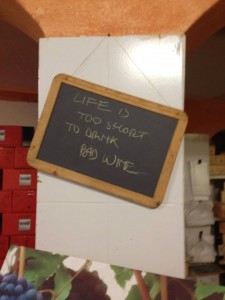
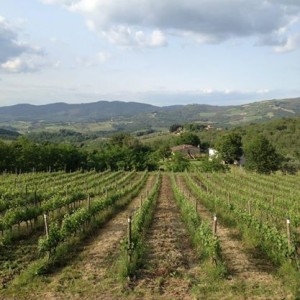
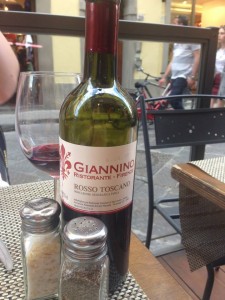
II. Flavor of Wines
Biological Vinicultures believe they have achieved better tasting wines because of their grape cultivation. They set out to grow grapes that are more controlled in their sugar production, helping in the development of physiological ripeness. Producers achieve this by encouraging competition among vines, forcing the plant to rely on the soil in order to get the nutrition it needs. This causes the grape vines to grow low to the ground to absorb the materials it needs. Many producers remove large quantities of grapes, so the vines can focus on making a select group of quality grapes. If this is accomplished, the wine has a more balanced alcohol and flavor content, even if there is a change in climate conditions. During fermentation, producers rely on spontaneous fermentation instead of yeasts that distort the flavor of the wine (Tamburlaine 2012).
In an article from Fortune magazine, wine experts sampled biological wines and their industrial counterparts to compare their flavors. The wine experts found that the biological wines were more expressive and represented their origin based on its texture, aroma, and flavor. This study concludes that biological wines are the answers to the gastronomic experience consumers want when they drink wine (Tamburlaine 2012).
III. Consumer Health
Also, biological wines will become more attractive to consumers because they are healthier for humanity. Farmers working in industrial vineyards suffer from respiratory and neurological problems, from spraying pesticides. The toxins in grape pesticides include: carcinogens, hormone blockers, neurotoxins, and reproductive or developmental blockers. The only chemicals that biological grapes are exposed to are sulfides and copper, which help protect the grape from extremely hot temperatures. Other additions to these wines are strictly biological including: animal manures, minerals, household wastes, plant wastes and algal preparations. Additionally, there are no of antibiotics or growth hormones exposed to the grapes to promote unnatural growth (“EU Rules for Organic Wine Production”2012).
IV. Supporting the Environment
At the same biological wines reflect the environment they reside in, because the vines play a key role in the ecosystem. Producers rely on the surrounding environment in order to protect the vines and promote grape growth; this could be the reason why these wines contain flavors that are reflective of their environment. The vines are grown with the natural fertility of the soil, no synthetic soluble fertilizers are introduced that cause water and air pollution. Similarly, there is a reduced irrigation system because the soil is promoted to maintain water, protecting against run off. Cereals and grasses promote a worm population that help this process and mix the soil around so it does not remain stagnant (Tamburlaine 2012).
With no pesticides sprayed, there are no animal deaths in the ecosystem. Moreover, the lack of presides promotes insects activity protecting the plant against more dangerous insects and diseases (Tamburlaine 2012). Traditionally, certain types of trees surrounding vineyards have been used to protect grape vines from pests. For example, rose trees are used to test the soil for fungi that cause serious disease. According to Luca Orsini, owner of Le Cincole (a biological wine producer), ‘Today, this is a new starting point for us—a way to continue our constant search for sustainable productivity: in favor of the environment and for our own benefit as producers who face a sometimes unscrupulous market that we’re deeply involved with day by day, (“Biological Wine in Tuscany” 2013).
V. My Experience in Panzano
At the forefront of this movement is Panzano, a small town in Italy. All of the producers in this town made a pact to grow their vineyards biologically. It has become a way of life for these producers, they are constantly looking for new ways to produce a wine that is reflective of their town but competitive in the global market. With the help of an agronomist (a person who studies the application of various soils and plant sciences to soil management and crop production) there have been studies on how to grow vineyards organically.
After living in Panzano for the last month, I have been inspired by the goal of the vineyards we have visited. In the United States, we are constantly told how important it is to purchase organic foods, but I have never heard about biological wines. After listening to the producers’ stories, I have learned they are truly grateful for the environment; grateful enough they will do anything to protect the environment for years to come. I am sure that each of these producers could make more money if they stuck to the conventional way of producing wine. However, these producers look at their grape like their own children, and are willing to put in the extra time in order to grow them naturally.
As a consumer who has tried these wines, I have begun to taste the artisanship and the environmental conditions that go into their production. I may not have a developed palate to taste every single nuance, but I can definitely taste a wine that reflects Tuscany and the environment of Panzano. When I go home, I will be able to share with my family the wine that I have purchased from these vineyards. Even though they have never visited Panzano, these wines will give them a glimpse of the experiences I have enjoyed. I believe this ability to transport consumers to different regions of the world will cause biological wines to dominate. Unlike industrial wines, consumers will be able to take a vacation through taste without leaving their homes. This will open up a dialogue among consumers about how different regions of the world bring their own spin on wine. This will leave behind wines that taste similar, and lead to embracing wine individuality.
VI. Conclusion
As consumers start to become more educated on biological wines there will be a change in current wine culture. As the health side effects of current pesticides are exposed, people are going to have to change their drinking habits to help their health. Similarly, people are going to have to embrace sustainable farming in order to help the environment. But most importantly, people are going to drink wines that are rich in flavor crafted by skilled artisans because they are going to love the stories that unfold as they drink it. Biological wines are going to act as a passport, allowing people to visit places like Panzano, helping them to better understand their culture. Ultimately, commercial wines are going to be a thing of the past.
Works Cited
“EU Rules For Organic Wine Production.” (2012): 5-45. Web. 4 June 2012. <http://www.itr.si/uploads/LW/AJ/LWAJRgGe_kylvigPDidvmg/ifoameu_reg_wine_dossier_201307.pdf>.
Goode, Jamie. “Improving Wine Quality with the Use of Biological Tools.” Lallemand. 2007. Web. 06 June 2014. <http://www.lallemandwine.com/spip.php?article432>.
Pellegrini, Paolo. “The Biological Wine of Tuscany.” Editorial. Firenze: Made in Tuscany 16 May 2013. Web. 6 June 2014. <http://www.firenzemadeintuscany.com/en/itineraries/this-week/in-vino-salus/>.
Privietera, Plania. “Organic Wine: Perceptions and Choices of Organic Consumers.” Academia. 2012. Web. 6 June 2014. <http://www.academia.edu/2120540/_Platania_M._Privitera_D._Organic_wine_perceptions_and_choices_of_Italian_Consumers>.
“What Is Organic?” Tamburlaine. 2012. Web. 06 June 2014. <https://www.tamburlaine.com.au/what-organic.html>.
